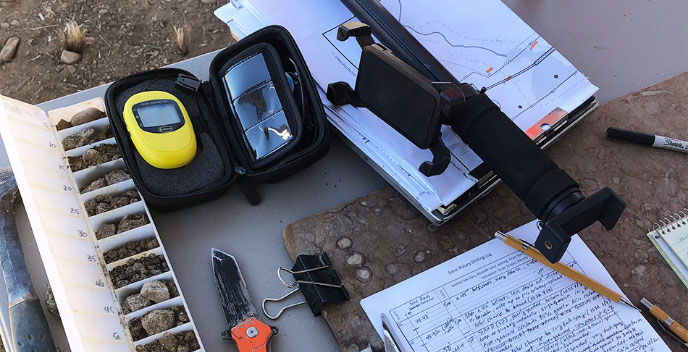Beckman Instruments, Inc. operated an electronic instruments manufacturing facility in Porterville, California. The facility utilized a solar evaporation pond for the temporary storage of liquids. Initial site investigations revealed the presence of chlorinated solvents in a shallow groundwater system in the vicinity of pond. 1,1,1-Trichloroethane, trichloroethylene, Freon 113, 1,1-dichloroethylene, and 1,1-dichloroethane were detected in groundwater samples. Lead was detected in soil near the pond.
Hargis + Associates, Inc. (Hargis) was retained to evaluate hydrogeologic conditions, the extent of groundwater and soil contamination, perform a Remedial Investigation/Feasibility Study (RI/FS), design and install a remediation system to control the migration and treatment of the contaminated groundwater, remediate the contaminated soil, and implement Resource Conservation
and Recovery Act (RCRA) closure of the impoundment.
The hydrogeologic investigation included a groundwater assessment, soil and groundwater sampling, and the installation of over 200 monitor wells and extraction wells. Detailed lithologic data from well and exploratory borehole drilling were used to identify an upper and lower alluvial aquifer separated by an aquitard. The data were also used to evaluate preferential pathways and contaminant transport within and between these units ultimately for remedial design. While predominately comprised of poorly-sorted silt, sand, and gravel, a well-sorted coarsegrained sand and gravel-filled paleochannel was identified in the upper aquifer downgradient of the source area. The paleochannel forms a preferential pathway that significantly influenced the direction of groundwater movement, and contaminant transport in the past. Vertical
and horizontal heterogeneities within the aquitard were also determined to influence contaminant transport, specifically contaminant migration into the underlying lower aquifer.
Hargis performed computer modeling to further evaluate groundwater conditions, simulate transport of chemical compounds in groundwater, evaluate both historic and current migration of the plume, and evaluate alternative remedial wellfield designs. The simulation also involved the assessment of groundwater/surface water interactions from various sources.

Hargis prepared work plan documents to negotiate cleanup levels with the U.S. Environmental Protection Agency (EPA) and California regulatory agencies. A Consent Order was executed with the EPA, the lead agency, to remediate the site. The RI/FS, Remedial Design, and Remedial Action Plan (RAP) included groundwater monitoring, extraction, treatment and discharge; and soil excavation. Interim remedial measures and the final RAP included the operation of three remedial wellfields, two groundwater treatment systems, and infiltration basins for discharge of treated water. The cleanup goals for the upper aquifer were achieved, and remediation has been discontinued. Hargis prepared a Monitored Natural Attenuation (MNA) Plan which resulted in an amendment to the Record of Decision for the aquitard and lower aquifer. Lead was remediated in site soil.
Through a collaborative partnership with site stakeholders lasting over 35 years, Hargis assisted with successful remediation of the site. In March 2022 the site was officially delisted from the CERCLA National Priority List.
Key Accomplishments:
– Performance an RI/FS
– Designed and installed monitor wells; collected samples; and performed aquifer tests to define hydrogeologic conditions.
– Designed and installed groundwater remediation system.
– Evaluated groundwater flow using a mixing cell model.
– Implemented RCRA pond closure.
– Achieving groundwater cleanup levels in a beneficial aquifer.
– Prepared MNA plan resulting in amendment to the ROD.
PDF: https://www.hargis.com/wp-content/uploads/2022/03/BCI-Porterville-03.25.22.pdf

